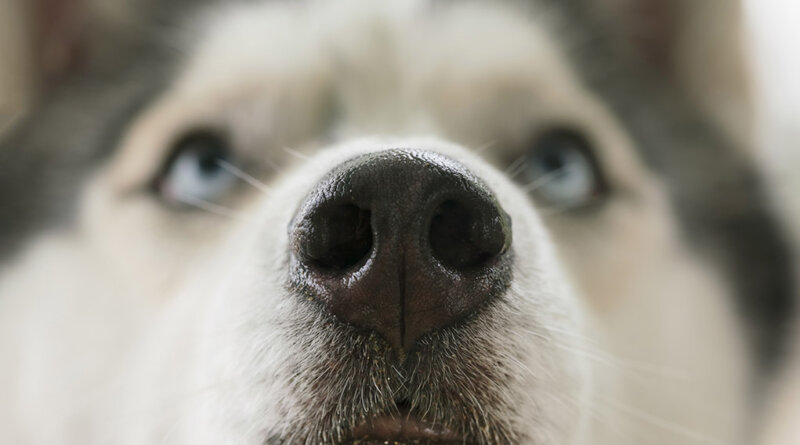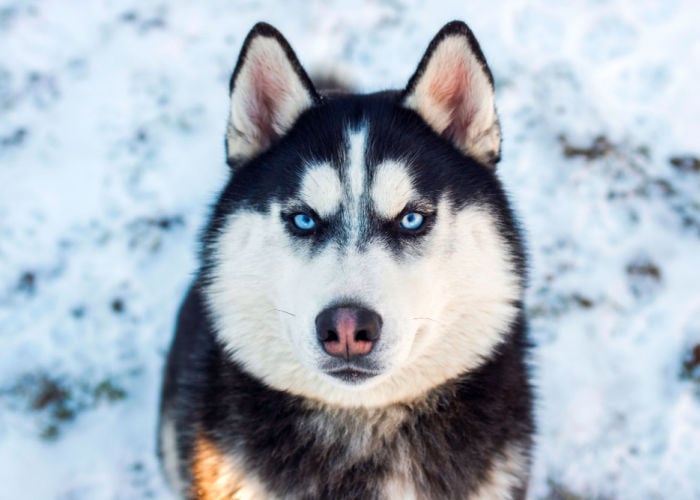Why Did It Change From Black To Pink? – Top Dog Tips
Have you asked yourself lately, “why is my dog’s nose changing color?”
Did you notice that your dog’s black nose has turned pink, then back to black again? Is that okay?
There are numerous reasons why your dog’s nose changes colors and we’ll discuss them further below.
As dog owners, we must monitor our pets. Even the slightest changes can mean different changes in their health or some underlying problems.
But that’s not always the case—some changes can be normal, and others can indicate issues. The problem is how can you differentiate it.
Below, we’ll discuss why your dog’s nose changes color. But first, let’s tackle what color should be a dog’s nose.
Dog’s Nose Changing Color: What Color Should Be the Dog’s Nose?
Of course, the color of the dog’s nose will depend on the breed.
Dog noses can be in the color black, brown, liver, or pink, and some have the same color as their coat.
On the other hand, puppies are usually born with pink noses which will later darken as they become an adult.
The color will still change as they grow older, it’ll often go back to pink or brown as they age.
Without further ado, let’s dive in on the possible causes of why your pup’s nose changes colors.
Reason Why Dog’s Nose Is Changing Color
There are multiple causes of why your dog’s nose color is changing. Some of these reasons can be a natural effect and they are no reason for concern.
Unfortunately, there are also some causes where it can be harmful to our dog’s health.
As pet owners, it’s only natural for us to be worried when we see changes in our pets.
If you want to make sure that everything’s okay, it’s best advised to contact your vet for further examinations.
Let’s dive all the way in on the possible causes of color changes in a dog’s nose.
Dog Snow Nose
Have you noticed your dog’s nose is usually dark or black and you’ve suddenly noticed that it turns pink or brown?
If this happens specifically during the cold winter season, your pup might have the dog’s snow nose or winter nose.
Also known as hypopigmentation, this condition usually causes the dog’s nose to be pink or light brown.
However, the color can also vary on the original color of your dog’s nose.
For instance, if your dog normally has a black nose, it typically turns pink or dark brown.
Another example would be if your dog has a brown nose, it usually turns to a lighter shade of brown.
There is still no clear cause as to why this occurs. But since it usually happens during the winter or cold season, researchers think that the cold temperature has something to do with it.
Fortunately, if your dog is experiencing hyperpigmentation, there’s no need to worry since dog winter nose is not harmful to dogs.
Certain dog breeds are more prone to snow noses. This includes Golden Retrievers, Labrador Retrievers, Siberian Huskies, and Shepherds.
Aging
Next on the list of possible causes is old age. Aging is one of the most common causes of a dog’s nose changing its colors.
When a dog ages, the pigment in the dog’s nose is most likely to change. If your pup’s nose is dark, it’ll turn into a lighter color or vice versa.
Injuries
Some injuries like cuts and abrasions can also cause the dog’s nose to turn pink while it’s healing.
It should turn to its original color once healed. If ever it doesn’t, consult with your vet for further tests.
Contact Dermatitis
If a dog comes in contact with something that can irritate your pup or something that they’re allergic to, it can cause a change in color in their nose.
Usually, if a dog encountered something they are allergic to, it will be accompanied by other symptoms.
For instance, monitor your pet. An allergic dog will have signs such as a swollen nose.
One common example of this is when the dog is allergic to a certain type of plastic.
This issue is called “Plastic Dish Nasal Dermatitis”. It is caused by a chemical found in plastic and rubber.
When the skin absorbs the chemical, it can result in loss of pigment due to the inhibition of melanin, which is a substance in charge of making the skin dark.
If you just bought a new dog bowl and notice a certain change in their nose, this can be a bad reaction to the plastic bowl.
If that’s the case, we suggest changing the plastic bowl to stainless steel and seeing if your dog’s nose goes back to its normal color.
Dudley Nose
Nasal De-Pigmentation also known as Dudley Nose can also be a cause of a change of color in a dog’s nose.
Even though the causes of this condition are still unknown, it is not something to be concerned about.
In Dudley Nose, the dog’s nose will turn slightly or, in some cases, completely white or pink. It’ll depend on the dog as some may have a temporary change, and others will be permanent.
Just like dog snow noses, certain dog breeds are more prone to Dudley Nose. These dog breeds are:
- Poodles
- Doberman
- Pinschers
- Afghan Hounds
- Golden Retrievers
- White German Shepherds
- Irish Setters
- Samoyeds
- Pointers
Vitiligo
It can also be a case of Vitiligo. In some cases, changes in the dog’s nose can mean that they have a medical condition affecting its skin.
In Vitiligo, it’s best to contact your vet as soon as you see any suspicious color changes.
This condition is caused by depigmentation of the dog’s skin and it can also be noticed in other parts of the dog, not just the nose.
In this issue, the cells responsible for giving pigment to the dog’s coat die or are not functioning properly.
There are multiple possible causes for Vitiligo, such as an autoimmune disease, genetic factors, or viruses.
Rottweilers are dog breeds that are susceptible to this condition. For instance, the loss of pigment in some patches of skin can lead to discoloration of dark skin.
Discoid Lupus Erythematosus
Discoid Lupus Erythematosus (DLE) is a skin disorder that is connected to the immune system.
In this condition, sores will appear on and around the dog’s nose and it tends to worsen when exposed to sunlight.
Also known as collie nose or Nasal Solar Dermatitis, this issue attacks parts of the dog’s body. Moreover, in DLE, only the leather of the dog’s nose is affected.
When a dog’s nose is black, it can turn bluish-grey or sometimes pink when the dog is experiencing DLE. The skin can also be scaled, cracked, and ulcerated.
Pemphigus Foliaceus
Next on the list is another autoimmune disorder called Pemphigus foliaceus. It is the second most common immune-related skin disease in dogs.
Pemphigus is also known for causing loss of pigment on the dog’s nose.
However, it is also partnered with symptoms such as pimples and scabs on the dog’s face.
Bacterial Infection
Yes, bacterial infections can also cause changes in the color of the dog’s nose.
If you’ve noticed that your dog’s nose is also swollen, crusty, sore, and in bad condition, it can be caused by a bacterial infection.
It is best advised to contact your vet as soon as possible for further assistance.
Skin Cancer
Last on our list is skin cancer. This condition can also change the color of our pup’s noses.
Dogs with a lighter color of noses, such as pink or white are more prone to sunburn and skin cancer.
If the color of your pup’s nose is on the lighter side, make sure to apply sunscreen or sunblock to prevent these issues.
Treatment for Dog’s Nose Changing Color
The treatment will vary from the causes of the changing of color.
If the cause is natural such as snow nose, these are all harmless and expect your pup’s nose to go back to its normal color when the warm weather comes up.
However, some causes can be caused by health issues such as vitiligo, lupus, bacterial infection, and even skin cancer.
It’s best advised to consult with your vet immediately to avoid further complications.
Frequently Asked Questions
Can you tell if a dog is dehydrated by their nose?
Yes, one common symptom of dehydration in dogs is when the dog has a dry nose.
Other signs of dehydration include loss of appetite, panting, dry gums, vomiting, diarrhea, lethargy, and more.
What should a healthy dog nose look like?
A healthy dog’s nose should have the same size on both the left and right sides. It should also feel moist to mildly dry.
You should also notice the consistent in-and-out airflow from both nostrils.
Is a dog’s nose an indicator of health?
No, the dog’s nose is not a good indicator of the dog’s health unlike their gums and fecal, which can tell you a lot about the dogs’ overall health.
A lot of pet owners think that a healthy dog has a cool and wet nose. However, that’s not always the case.
The temperature and moistness of a nose are not great indicators of the overall health condition of a dog.
Dog’s Nose Changing Color: Summary
If you’re wondering why your dog’s nose changing color, there are a lot of possible reasons for this.
One of the most common causes of discoloration in the dog’s nose is the weather.
If you’ve noticed the color of your dog’s nose changed during the winter season, it can be because they have snow noses.
This condition is not serious and their original color should go back to normal as soon as the warm weather comes up.
However, it’s always a good idea to consult with your vet instead of guessing or surfing through the net for possible causes.
A change in the dog’s nose can also be caused by multiple health conditions such as an allergic reaction, bacterial infection, Pemphigus Foliaceus, or Discoid Lupus.
If you’re unsure about the changes happening in your dog’s body, remember that your vet can properly find out the root of the problem.
Schedule an appointment to further examine your pup just to make sure they do not have any underlying health conditions.
RELATED: MY DOG HAS RUNNY NOSE: 5 THINGS TO DO







